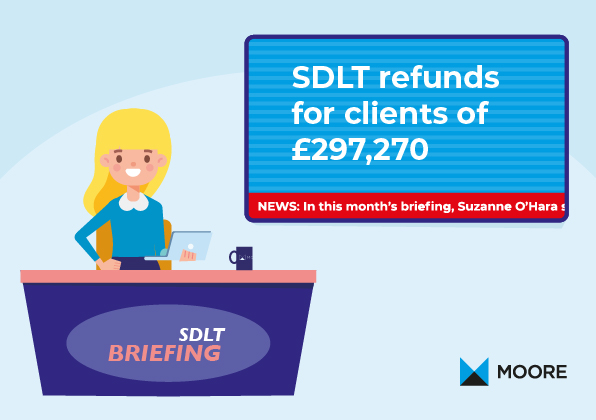
In this month’s case study, Suzanne O’Hara provides a brief overview of the most recent refund applications made to HMRC that have resulted in refunds of £297,270.
As part of our SDLT specialist advisory service, we are often asked to assist with SDLT refund applications. These are generally by way of an amendment to the original SDLT return (the time limit for a claim is 12 months) or an overpayment of tax claim (the time limit for a claim is 4 years). The type of refund claim available will be very much dependent on the facts and circumstances of each case.
Below is a summary of some of our most recent cases.
Case 1 – Derelict property: refund of £176,250
In this case, the original SDLT return was submitted on the basis that the transaction was subject to the 3% surcharge.
Following our detailed review, it was determined that the property was in such a state of disrepair so as not to be suitable for use as a dwelling. Accordingly, not only should the 3% surcharge not have applied, nor should the standard rates applying to residential property transactions. Instead, the lower rates for non-residential property should have been applied, which significantly reduced the SDLT payable and provided a refund of £176,250.
Cases 2 & 3 – MDR and annexes: total refunds of £93,320
Both of these cases involved the acquisition of a property which contained a self-contained annex. The original returns were submitted without claiming Multiple Dwellings Relief (MDR).
Following our detailed review, it was determined that in both cases the annexes offered all the facilities to support independent everyday living (i.e. kitchen, bathroom, living areas etc) and the requisite level of privacy so that an unconnected tenant could reside at the property.
As such, a claim for MDR was made and resulted in refunds of £35,250 and £58,070 respectively.
Case 4 – Application of the special partnership provisions: refund of £18,750
This case involved the retirement of one partner and the transfer of the business premises to the other partner, as part of the dissolution of the partnership. The business premises were held in the partnership, as partnership property, equally between the partners.
Upon the dissolution of the partnership, the business premises were transferred to a limited company of which the remaining partner held 100% of the shareholding.
The original SDLT return was submitted applying the market value of the property as the purchaser was a connected company.
Following our detailed review, we concluded that the special partnership provisions contained at Schedule 15 FA 2003 applied, so that an alternative calculation was required to determine the chargeable consideration. This resulted in a reduction of the chargeable consideration from £750,000 to £375,000, giving rise to a refund of £18,750.
Case 5 – Linked transactions and mixed use: refund of £8,450
In this case, the original return was submitted on the basis that the property consisted entirely of residential property.
The transaction consisted of the acquisition of a house and garden and grounds, along with the adjoining lands (held under separate title) that were (and continue to be) farmed by a local farmer.
Following our detailed review, it was concluded that as the residential property transaction was linked to a non-residential property transaction; the mixed-use rates applied, thereby generating a refund of £8,450.
If you feel that you or your client has overpaid SDLT, we would be more than happy to review the case and provide a second opinion and assist with the application for a refund, if applicable.
If you have any queries around SDLT please do not hesitate to get in contact via our SDLT Advisory Service.
Return to case studies